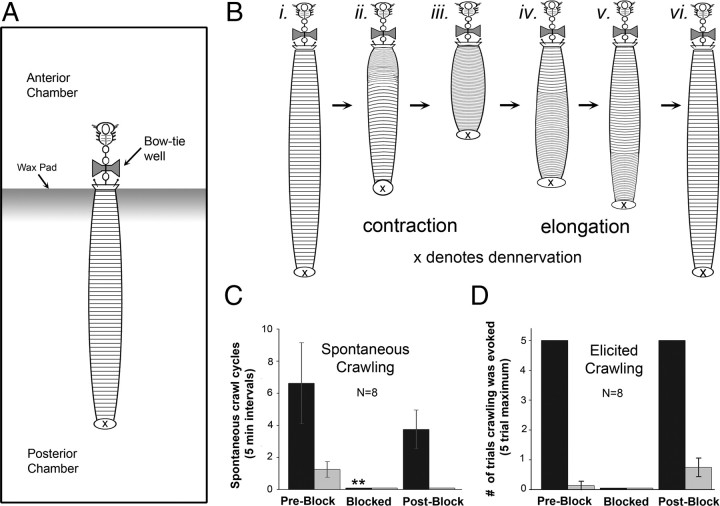Figure 2.
Crawling behavior in the nearly intact leech and its dependence on descending signals from the cephalic ganglion. A, Schematic drawing of the nearly intact leech preparation. A bow-tie-shaped well was placed across the connectives between M2 and M3. The well was sequentially filled with saline, isotonic sucrose, and then saline to restore neural transmission. B, Schematic drawing of overt crawling behavior in nearly intact leech preparations when descending signals were not blocked. i–iii indicate the contraction phase and iv–vi the elongation phase of one overt crawl cycle. C, Number of spontaneous crawl cycles observed for 8 animals during a 5 min interval for each condition (i.e., preblock, blocked, postblock). D, Number of trials (out of 5) that crawling was elicited in 8 animals after a gentle hyper-elongation of the body; same three conditions were tested. C, D, Black bars represent shallow water (<1 mm depth), and gray bars represent deep water (10 mm depth). **p < 0.01. Error bars are ±SEM.

